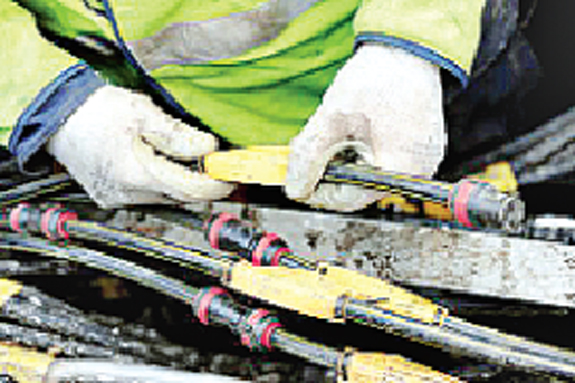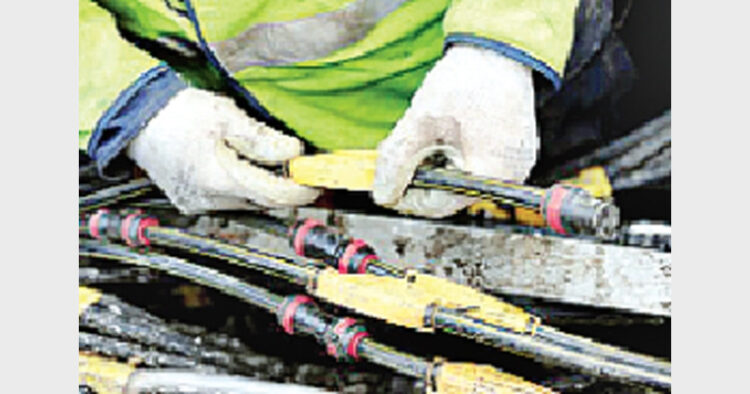Connecting 2.5 lakh Panchayats through broadband?
Intro: Narendra Modi government would be known for building a broadband highway much as the Atal Behari Vajpayee government was known for building highways connecting metros and cities across India.?
 Information Technology is set to embrace more than 2.5 lakh villages as the Central government is now ready with a plan to ensure that high-speed broadband connectivity is available in each and every part of the country. Recently at a meeting with IT industry captains, Union Communications and Information Technology Minister Ravi Shankar Prasad said, “Prime Minister Narendra Modi has set a target of providing broadband connectivity to 2.5 lakh local bodies (spread over six lakh villages) across the country over the next three years, with 50,000 this (fiscal) year and one lakh each over the next two years.”
Information Technology is set to embrace more than 2.5 lakh villages as the Central government is now ready with a plan to ensure that high-speed broadband connectivity is available in each and every part of the country. Recently at a meeting with IT industry captains, Union Communications and Information Technology Minister Ravi Shankar Prasad said, “Prime Minister Narendra Modi has set a target of providing broadband connectivity to 2.5 lakh local bodies (spread over six lakh villages) across the country over the next three years, with 50,000 this (fiscal) year and one lakh each over the next two years.”
There is no doubt that once this plan to connect the panchayats gets implemented, it will lead to landmark transformations in the quality of life of the people in the smaller towns and villages.
The task of providing broadband connectivity to 2.5 lakh panchayats should have been completed by now. But due to the lack of proper direction from the UPA government, broadband has not reached to all parts of the country. The UPA government had set up a Special Purpose Vehicle called BBNL (Bharat Broadband Nigam Ltd) in October 2011 for completing the project called the National Optical Fibre Network (NOFN) under which all the panchayats in the country were to be provided with broadband connectivity in only two years. However, since 2011 BBNL has only been able to float a few notice giving tenders. In some states, BBNL is yet to get the right that allows the digging work for laying of fibre optic cables. BBNL needs to lay more than six lakh kilometres of fibre optic cables, but the process is yet to start.
Under the new NDA government, which has already declared that Information Technology and Internet are its focus areas, the work has once again started on NOFN. Telecom Commission has given its approval to a revised strategy for NOFN and under the new guidelines 2.5 lakh gram panchayats will have access to broadband connectivity by March, 2017. NOFN has the potential to transform many aspects of the lives of Indians living not only in cities but also in smaller towns and villages. We can expect amazing improvements in the ways by which we use video, data, Internet, telephone services in areas such as education, business, healthcare entertainment, etc.
Currently the broadband connectivity in the country is extremely poor. The latest data released by TRAI (Telecom Regulatory Authority of India) shows that the total number of broadband connections in India at the end of April 2014 was 61.74 million. This is less than the number broadband connections are in Sri Lanka and Malaysia. There is lot of catching up that India needs to do when it comes to broadband connectivity. The TRAI data also shows that the top five broadband service providers constitute 83.65 per cent market share of total broadband subscribers at the end of April 14. They are BSNL (16.94 million), Bharti (12.84 million), Idea (7.45 million), Vodafone (7.26 million) and Reliance Communications Group (7.15 million). Amongst the wired broadband service providers BSNL is at the top with (10.01 million) connections during this period. In the Wireless Broadband Service providers category Bharti is at the top with 11.46 million connections.
Prime Minister Modi’s agenda for developing broadband in the country goes far beyond providing connectivity to the panchayats. He has outlined his vision to WiFi systems to provide connectivity to every school in the country. Once the entire country is connected through high-speed broadband it will be easier to launch national level e-Governance solutions for improving delivery of critical services related to governance, healthcare and education. -Anoop Verma?
?













Comments